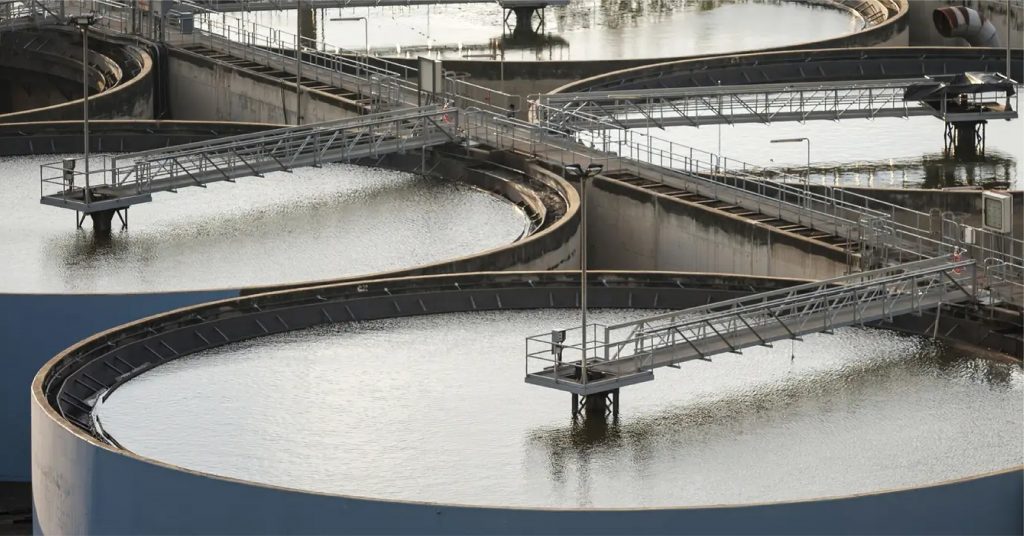Water treatment is crucial for providing clean and safe water for consumption and usage. The steps of water treatment are designed to remove contaminants and ensure that water is safe for drinking and other purposes. This blog will introduce you to the essential 7 steps of water treatment and highlight the importance of each step in ensuring clean, safe water.
Essential 7 Steps of Water Treatment
Step 1: Coagulation and Flocculation
Coagulation and flocculation are the first steps in water treatment. During coagulation, chemicals like aluminum sulfate or ferric chloride are added to the water. These chemicals cause small, suspended particles to clump together into larger particles, known as flocs. Flocculation follows, where gentle stirring helps the flocs grow bigger and settle more easily. This step is vital in removing suspended particles from water, making it clearer and easier to filter.
Step 2: Sedimentation
Sedimentation involves allowing the water to sit undisturbed so that the flocs formed during coagulation and flocculation can settle at the bottom. The clear water on top can then be separated and moved to the next step. This process effectively reduces the load on subsequent filtration steps and enhances the overall efficiency of the water treatment process.
Step 3: Filtration
Filtration is the process of passing water through a filter to remove smaller particles that did not settle during sedimentation. Filters can be made of sand, gravel, or charcoal. For example, sand filters are commonly used to trap particles, while charcoal filters can remove odors and improve taste. Filtration plays a crucial role in ensuring that the water is free of fine particulates and other contaminants.
Step 4: Disinfection
Disinfection is a critical step in the water treatment process that aims to kill harmful bacteria, viruses, and other pathogens. Common disinfectants include chlorine, ozone, and ultraviolet (UV) light. For instance, chlorine is widely used due to its effectiveness and residual effect, which continues to disinfect as the water travels through the distribution system. Disinfection ensures that the water is safe to drink and free from disease-causing microorganisms.
Step 5: pH Adjustment
pH adjustment is important to ensure the water’s pH levels are balanced, as extreme pH levels can cause corrosion in pipes and affect the taste of the water. Lime or acids are often added to achieve the desired pH level. For example, adding lime can raise the pH of acidic water, making it less corrosive. Proper pH balance is crucial for maintaining water quality and safety.
Step 6: Fluoridation
Fluoridation involves adding fluoride to the water to help prevent tooth decay. This step is particularly beneficial for dental health. Many communities add fluoride to their water supply, as studies have shown that it can significantly reduce cavities in both children and adults. Fluoridation is a preventative health measure that enhances the overall well-being of the population.
Step 7: Distribution
The final step of water treatment is distribution, where treated water is delivered to homes, businesses, and other consumers. Ensuring the integrity and safety of water during distribution is essential. For example, maintaining proper pressure in the distribution system helps prevent contamination from external sources. The distribution step ensures that clean, treated water reaches consumers safely and efficiently.
Ion Exchange’s Role in Ensuring Safe Water Treatment
For over sixty years, Ion Exchange has been a global leader in providing comprehensive water treatment solutions. Our tailored offerings cater to the diverse needs of industries, institutions, municipalities, and both urban and rural communities worldwide. We specialize in customized and pre-engineered water treatment plants that encompass clarification, filtration, disinfection, and process water treatment. Our solutions ensure that treated water meets stringent quality standards, making it suitable for a wide range of critical applications.
Explore their Comprehensive Water Treatment Solutions:
RAW WATER TREATMENT
Our comprehensive raw water treatment systems and products at Ion Exchange efficiently tackle fluctuations in turbidity, flow rates, and chemical concentrations. By effectively removing suspended and colloidal solids, silica, iron, bacteria, and hardness, our solutions ensure the desired feed water quality. Our lineup includes essential products such as Aeration, Coagulation and Flocculation, Clarification, Filtration, and Disinfection, each playing a crucial role in delivering clean and safe water.
PROCESS TREATMENT
Our comprehensive lineup of standard packaged, industrial, and tailored water treatment plants offers effective solutions for various applications including boiler water treatment, cooling systems, and other industrial processes. We employ advanced techniques like high-flow demineralization with specialized regeneration processes for treating turbine and process condensates in thermal, nuclear, and industrial sectors. Our product range includes softeners, demineralization units, nanofiltration, reverse osmosis, ultrafiltration, electrodeionization (EDI), and electrodialysis reversal (EDR), ensuring tailored solutions to meet diverse water treatment needs.
POST-TREATMENT
Ion Exchange provides comprehensive post-treatment solutions that condition treated water for specific end uses. These solutions are tailored to meet various plant conditions and include a range of products such as Condensate Polishing Units, Deaerators, Sidestream Filters, Boiler Water Chemicals, Cooling Water Chemicals, and Chemical Dosing Systems. Each product is designed to ensure optimal water quality and operational efficiency, addressing specific needs like condensate polishing, oxygen removal, and chemical treatment to maintain system integrity and performance.
DRINKING WATER TREATMENT
Water intended for potable use must adhere to the stringent standards outlined in IS 10500, ensuring clarity, absence of unpleasant color, taste, or odor, low dissolved solids and hardness, and freedom from pathogenic bacteria. Ion Exchange leads the way in potable water treatment through our flagship brand, ZeroB. Our innovative drinking water solutions utilize cutting-edge technologies such as reverse osmosis, ultrafiltration membranes, electrochlorination, ozonation, and resin treatments. These methods effectively purify both surface and groundwater, transforming it into safe, clean drinking water.
Conclusion
In conclusion, understanding the seven steps of water treatment is crucial for ensuring clean and safe water for consumption and daily use. Each step plays a vital role in removing contaminants and pathogens, adjusting pH levels, and enhancing water quality. As we look to the future, advancements in water treatment technology promise even more efficient and sustainable solutions.
Connect with Ion Exchange experts to learn more about the water treatment processes.


